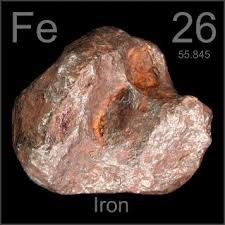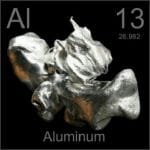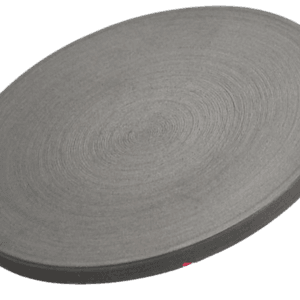Iron Aluminum Silicon Sputtering Target Description
 Iron, also known as ferrum, derives its name from the Anglo-Saxon word *iren* (with *ferrum* being the Latin term). It has been used since before 5000 BC. The chemical symbol for iron is “Fe,” and it has an atomic number of 26, positioning it in Period 4 and Group 8 of the periodic table, within the d-block. The relative atomic mass of iron is 55.845(2) Dalton, with the number in brackets indicating the uncertainty.
Iron, also known as ferrum, derives its name from the Anglo-Saxon word *iren* (with *ferrum* being the Latin term). It has been used since before 5000 BC. The chemical symbol for iron is “Fe,” and it has an atomic number of 26, positioning it in Period 4 and Group 8 of the periodic table, within the d-block. The relative atomic mass of iron is 55.845(2) Dalton, with the number in brackets indicating the uncertainty.
 Aluminum, or Aluminium, is a silvery-white, soft, non-magnetic, and ductile metal. Due to its high reactivity, native aluminum is rare and usually only found in highly reducing environments. Instead, it occurs in over 270 different minerals. When evaporated in a vacuum, aluminum forms a reflective coating used in telescopes, automotive headlamps, mirrors, packages, and toys. It is extensively utilized in the aerospace, automotive lighting, OLED, and optical industries.
Aluminum, or Aluminium, is a silvery-white, soft, non-magnetic, and ductile metal. Due to its high reactivity, native aluminum is rare and usually only found in highly reducing environments. Instead, it occurs in over 270 different minerals. When evaporated in a vacuum, aluminum forms a reflective coating used in telescopes, automotive headlamps, mirrors, packages, and toys. It is extensively utilized in the aerospace, automotive lighting, OLED, and optical industries.
![]()
Silicon is a chemical element derived from the Latin word ‘silex’ or ‘silicis’, meaning flint. It was first mentioned in 1824 and observed by J. Berzelius. The isolation was later accomplished and announced by J. Berzelius. Its canonical chemical symbol is “Si”. Silicon has an atomic number of 14, is located at Period 3 and Group 14 in the periodic table, and belongs to the p-block. Its relative atomic mass is 28.0855(3) Dalton, with the number in brackets indicating the uncertainty.
Related Products: Iron Sputtering Target, Aluminum Sputtering Target, Silicon Sputtering Target.
Iron Aluminum Silicon Sputtering Target Specifications
| Material Type | Iron Aluminum Silicon |
| Symbol | Fe/Al/Si |
| Color/Appearance | Metallic solid in various forms including powder, sputtering target, foil, bar, plate |
| Melting Point | / |
| Density | / |
| Available Sizes | Dia.: 2.0″, 3.0″, 4.0″, 5.0″, 6.0″ Thick: 0.125″, 0.250″ |
We also offer other customized shapes and sizes of the sputtering targets; please Contact Us for more information.
Packing
Our Iron Aluminum Silicon Sputtering Targets are meticulously labeled and tagged to facilitate clear identification and maintain stringent quality control. We prioritize protecting these targets from any potential damage during storage and shipping to ensure they arrive in pristine condition.

 MSDS File
MSDS File



Reviews
There are no reviews yet.